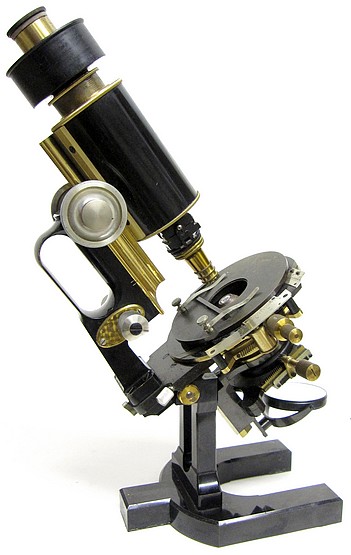
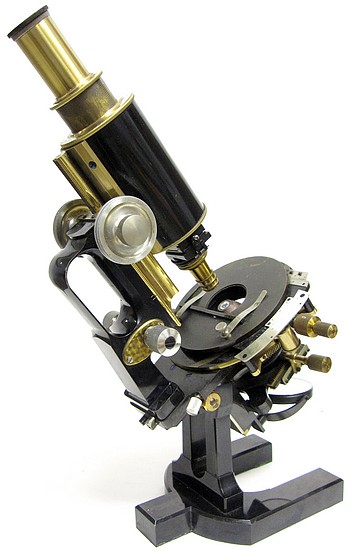
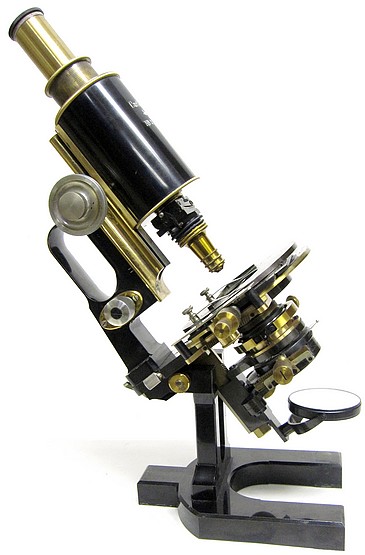
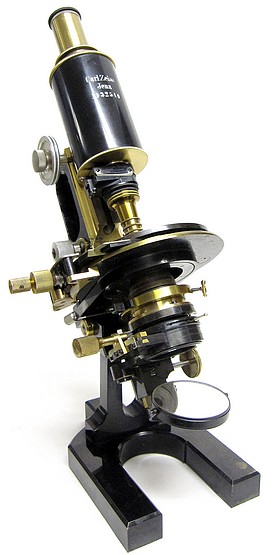
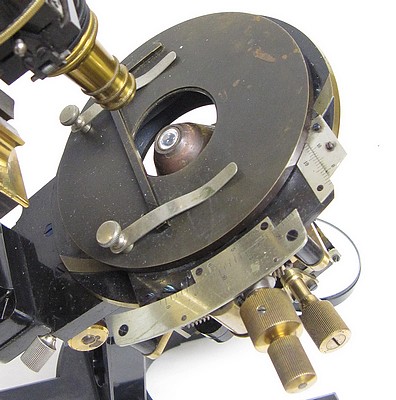
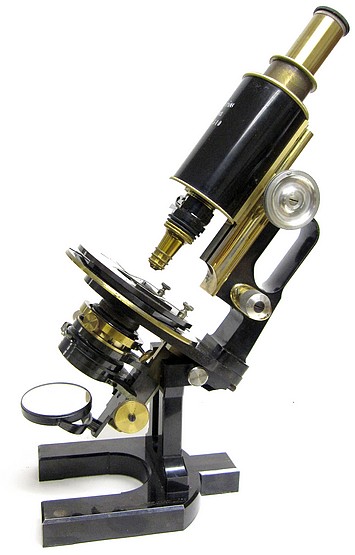

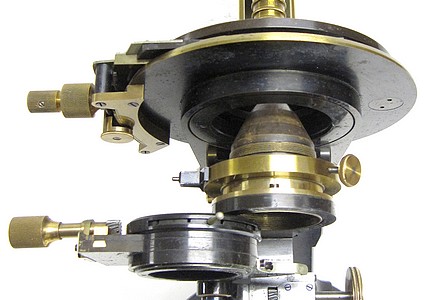
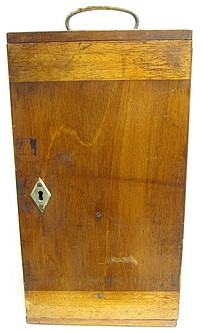
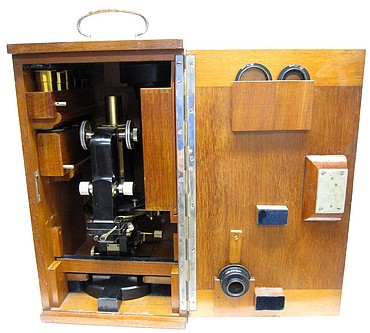
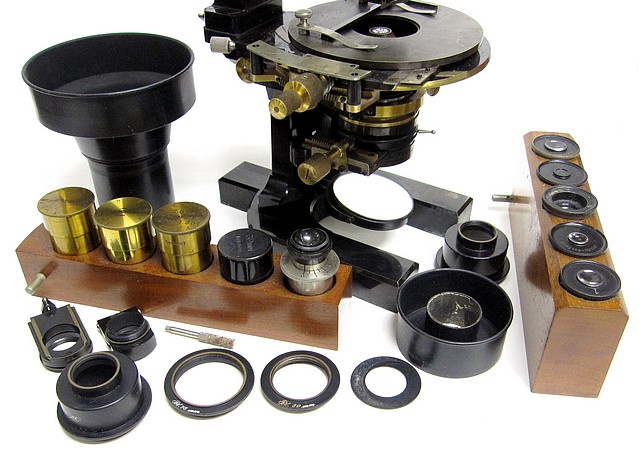
This microscope was manufactured in 1899, making it a very early example of its type. It is based on a new design by Max Berger of Zeiss first introduced in 1898 (Zeitschrift fur Instrumentenkunde, vol. XVIII, 1898, pp. 129-133). The major innovations of this design were a new type of fine adjustmentand a limb having an integral handle (now, often referred to as a "Jug-Handle" microscope). While this microscope is perfectly suited for conventional work, this particular model was made for the purposes of photomicrography and projection. Accordingly, the main tube appears to be made of aluminum presumably to reduce the weight on the fine adjustment mechanism thus allowing it to be more sensitive and responsive when the microscope is inclined in the horizontal position (later versions of this model dispensed with the use of aluminum). See this article from the Quekett Microscopical Club. Elsewhere on this site is an example of the similar Zeiss 1B Jug handle microscope.
The Zeiss achives (see below) indicate that this microscope was delivered to Eimer & Amend in New York, sales agent for Zeiss instruments in the USA, on Nov. 4, 1902. Evidence of the quality of this instrument is the fact that it was still in use at an industrial site (a subsidiary of General Electric in Rockford IL ) up to the year 2009; it remains in perfect working condition.

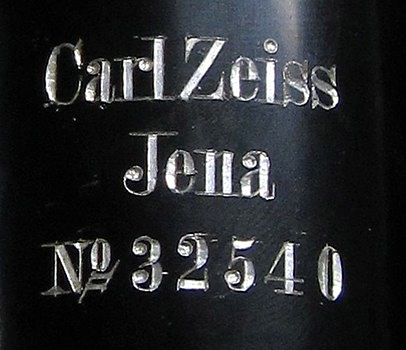
The following was extracted from the Journal of the Royal Microscopical Society, 1898
Berger's New Microscope. The novelty in this instrument is entirely confined to the ovcrstage, and is intended to meet the constructional difficulties involved in adapting the adjustments (especially the fine) to Microscopes used for high-power photomicrography. Usually the strain on the fine adjustment caused by the extreme length (and consequent weight) of tube is a decided disadvantage. Herr Berger arranges so that both his coarse and fine adjustment are independent of the drawout. The Microscope is also suitable for ordinary use. Fig. 98 gives a general view, fig. 99 a vertical section, and fig. 100 a ground plan.
The oval-shaped piece B is arranged as a handle, which affords a strong brace between the fine adjustment path V (fig. 100) of the micrometer work and the special hollow-cast standard H (fig. 99). The fine adjustment differs widely from the general form, and is fitted by means of a very strong dove-tail shaped slide F, so hollowed out in its upper part that it affords the requisite room for the spiral spring W. The under part of F is pierced, and conceals the very long nut for the micrometer-screw M. Contact ensues between the hard-tempered extremity of the micrometer-screw and another also hard-tempered anvil-shaped steel piece which is screwed into the lid D2, closing dust-tight the under opening in the standard H. On the fine adjustment slide F rests, very solidly screwed, the gear P for the coarse movement. The aluminum tube T (fig. 99). In order to avoid undue wear and tear of the mechanism is connected in the usual way with the tooth-rack by means of a copper companion piece Z (fig. 100). The coarse adjustment follows the usual models. The micrometer-screw is thus seen to be packed away in the hollow stand for protection's sake. It is completely sheltered from direct hand-touch. It is turned by means of an endless screw E (figs 99 and 100) which gears into the toothed wheel S, working on the flange of the screw, and carries the usual micrometer knob. By means of this arrangement two conditions are satisfied: the fine adjustment is slowed in the most desirable way without the necessity of requiring from the micrometer-screw too fine a motion, and the position of the endless screw, so firm and safe in the handle-like stand, renders even rough mechanical operations entirely without effect on the fine adjustment.
In order to avoid injury to the micrometer-screw when the slide F is at its extreme highest or lowest position, a special protection arrangement, limiting the play of the endless screw, is contrived for the fine adjustment. As is seen from fig. 100, the endless screw E engages another toothed wheel S, which is a nut working on a vertical screw. This nut S2 comes into contact with the upper or lower surface of the chamber containing it before the fine adjustment slide F reaches the end of its travel, thus preventing strain on that part of the mechanism.
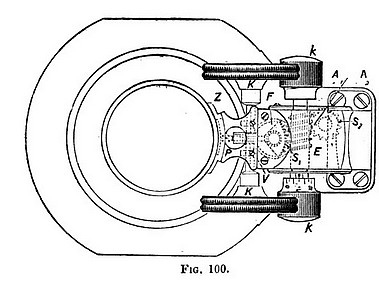
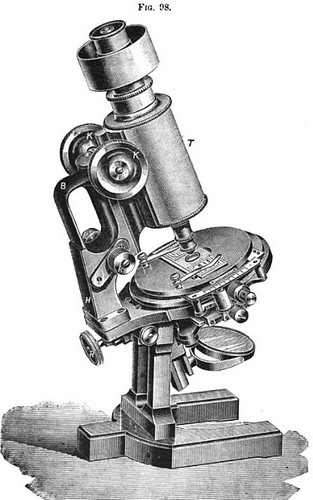
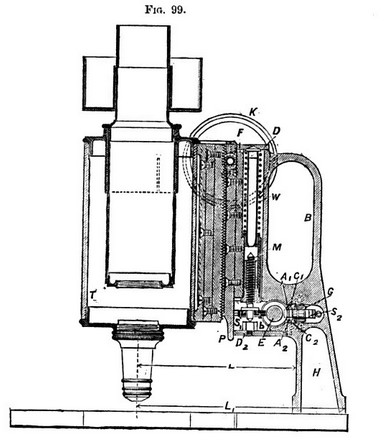
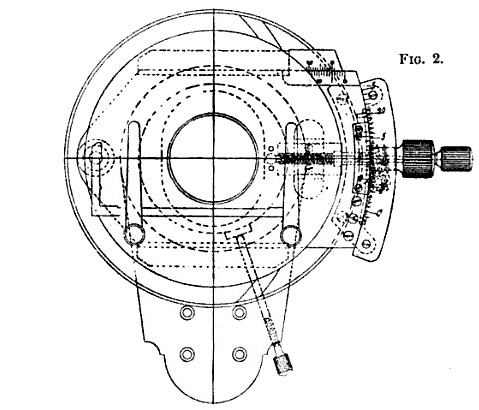
A description of the photo-micrographic mechanical stage (Fig. 2): it will be seen that the heads of the pinions are on Turrell's plan, but the outer head gives transverse movement to the stage-plate instead of vertical movement. The pitch of the screw on this pinion is fine, so that the motion is slow. The vertical movement, which is actuated by the inner pinion bead, is on altogether a novel plan. The motion is one in arc; this stage-plate being pivoted on the left-hand side, has rack teeth cut in it, into which a pinion is geared. This pinion has a toothed wheel fixed to it, in which engages an endless screw attached to the pinion that carries the inner pinion head. The speed of the object at the centre of the stage is about half that of the rack, because the object is placed about half way between the rack on the right and the pivot on the left-hand side of the stage. The stage is concentric with simple non-mechanical rotation; it can be clamped in any desired position by a small screw at the side of the stage (not shown in the figure).
The IC microscope as it appeared in the 1902 Zeiss catalog
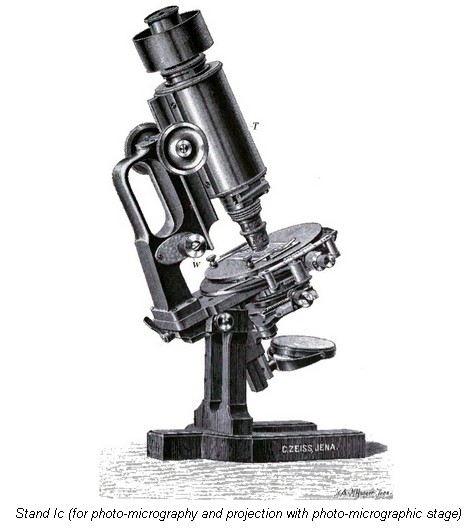
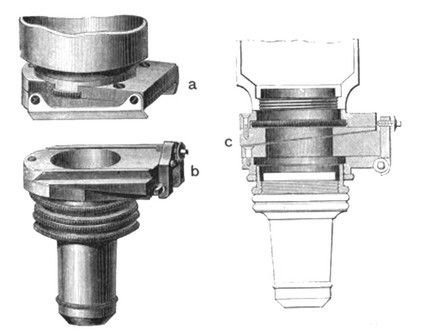
Zeiss objective changer
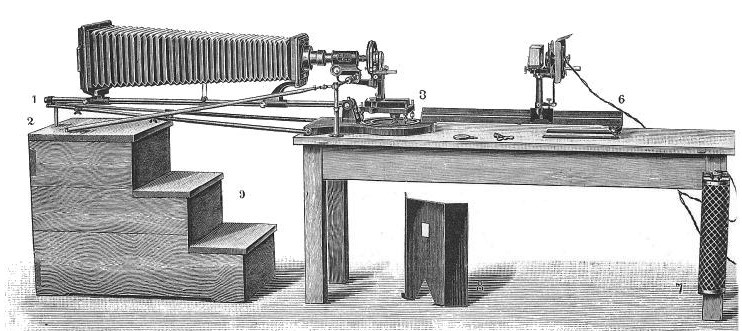
According to the extract from the 1913 catalog shown below the various models, IA, IB, and IC, were defined on the basis of the stage attached to the microscope. However, any of the models can be found with the accessory fittings for photomicrographic work:
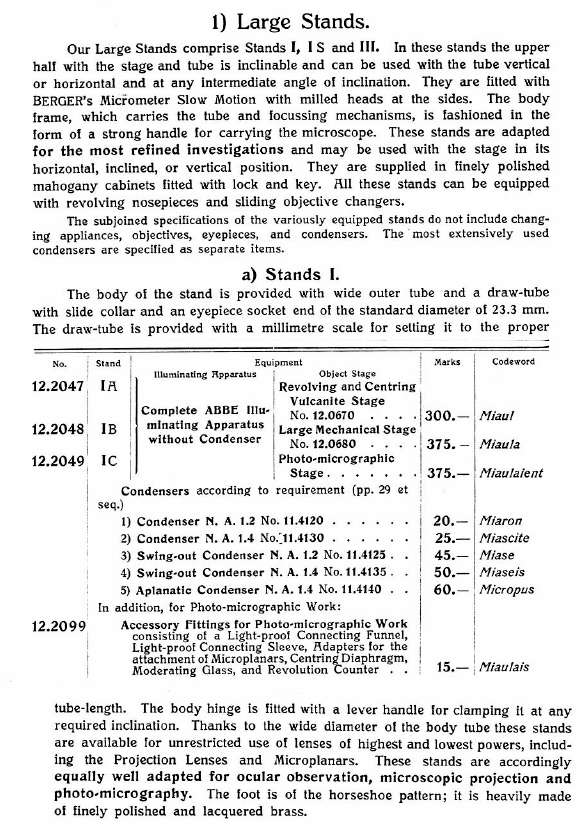
Home-Antique Microscopes Site Index
email: wissnera@verizon.net